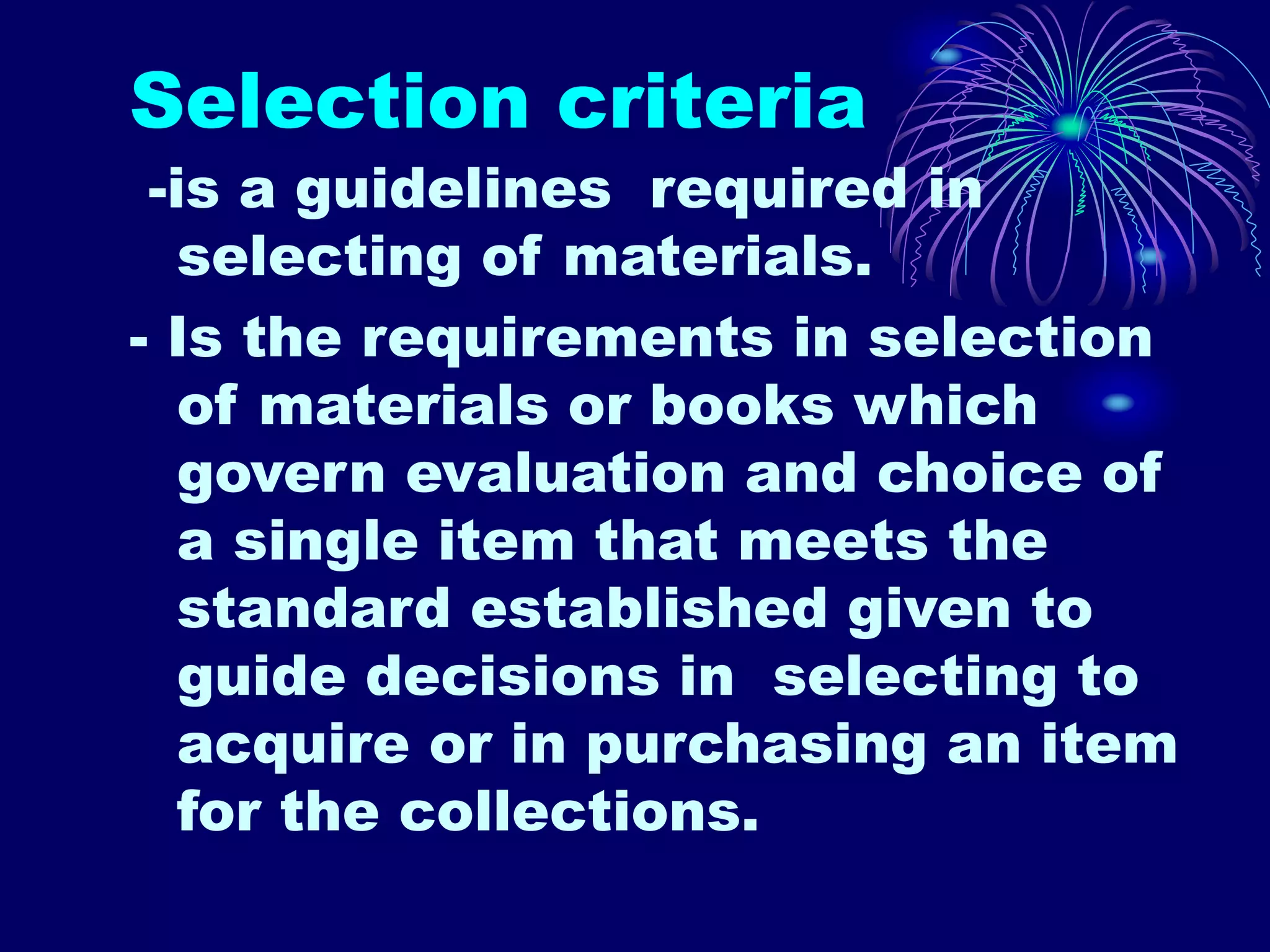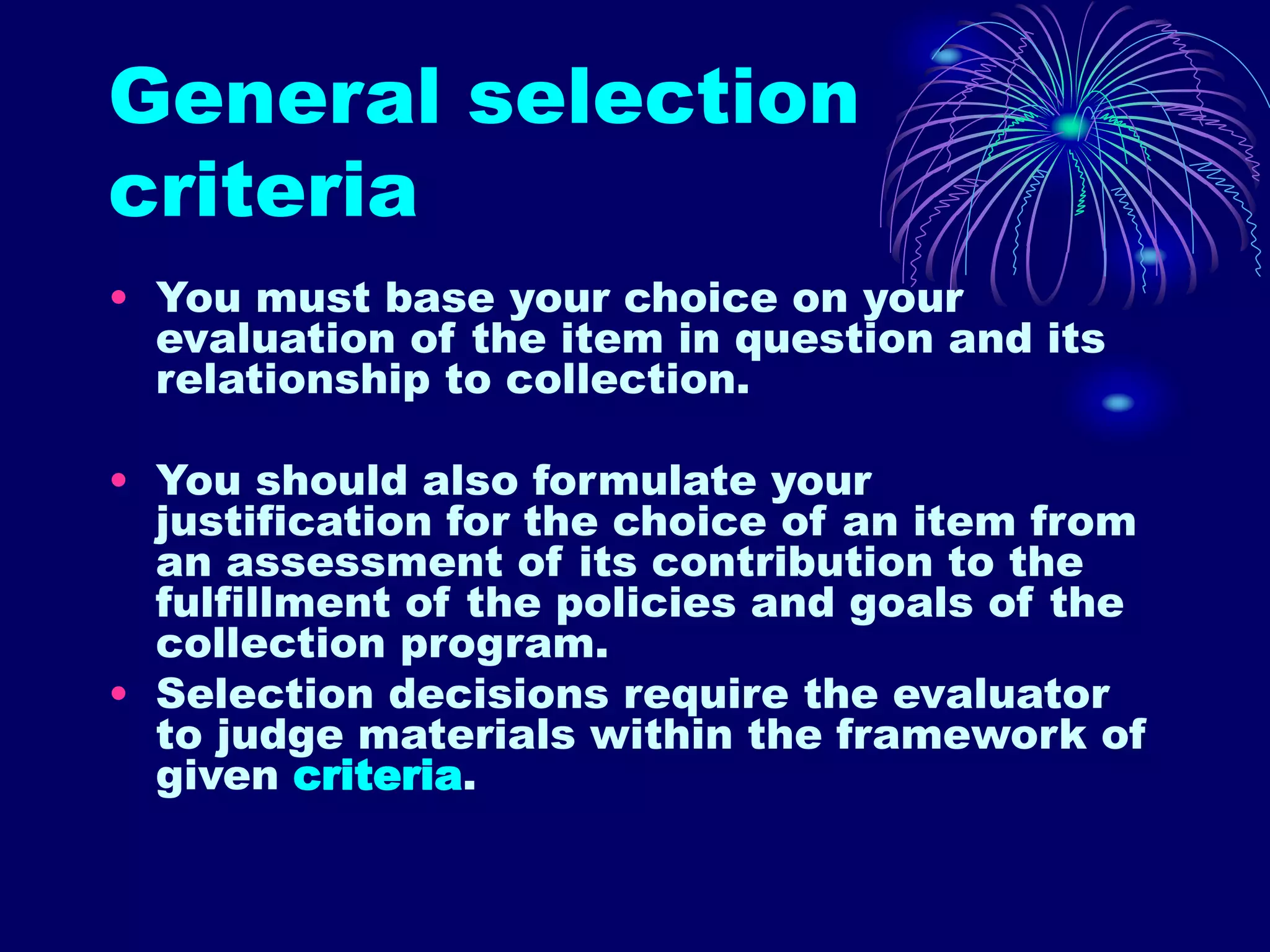This document outlines general selection criteria for evaluating materials to add to a collection. It discusses several criteria including intellectual content, authority, scope, accuracy, treatment, and instructional design. Additional criteria covered are physical format, technical quality, aesthetic quality, safety, cost, ease of use and maintenance. Selection decisions require applying these criteria to determine an item's contribution and appropriateness for the collection and its intended users.



























































